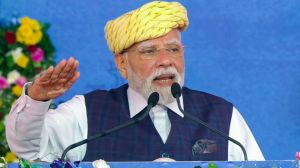Stay updated with the latest - Click here to follow us on Instagram
Justin Trudeau resigns: What happens now in Canada?
Trudeau made the announcement on Monday, explaining his decision was based on the need for the Liberal Party to have a clear path forward.
 Canada Prime Minister Justin Trudeau speaks with media outside Rideau Cottage, Monday, Jan. 6, 2025 in Ottawa. (Photo : AP)
Canada Prime Minister Justin Trudeau speaks with media outside Rideau Cottage, Monday, Jan. 6, 2025 in Ottawa. (Photo : AP)Canadian Prime Minister Justin Trudeau stepped down on January 6 after years of leading the country. Facing internal party struggles, criticism of his policies, and a growing lead by the opposition Conservative Party, Trudeau announced his resignation, saying he could no longer be the best option for Canada’s leadership.
What led to Trudeau’s resignation?
Trudeau made the announcement on Monday, explaining his decision was based on the need for the Liberal Party to have a clear path forward. “This country deserves a real choice in the next election,” he said. “If I’m having to fight internal battles, I cannot be the best option in that election,” he said.
Trudeau has been in power for nearly a decade, winning three elections. However, his most recent win in 2021 left him with a minority government, and recent polls show the Conservative Party, led by Pierre Poilievre, with a 20-point lead over the Liberals.
How did it happen?
The resignation came amid criticism of Trudeau’s policies from within his party. Former Deputy Prime Minister Chrystia Freeland, a key ally, also resigned recently.
In a strongly worded letter, she criticised what she called “political gimmicks,” such as a temporary sales tax holiday and cash rebates, describing them as unaffordable and short-sighted.
“I thank Justin Trudeau for his years of service to Canada and Canadians,” Freeland said in a social media post. “I wish him and his family the very best”, CNN reported.
Trudeau acknowledged their differences, saying, “I had hoped she would stay on, but she chose otherwise.”
US-Canada tensions rise as Trump prepares to return
Adding to the challenges is tension with the United States. President-elect Donald Trump, who is set to return to the White House, has announced plans for a 25% tariff on all Canadian imports. Trump has also mocked Canada, referring to Trudeau as the “governor” of the “Great State of Canada” on social media.
Trump suggested Canada should consider merging with the United States. “Many people in Canada LOVE being the 51st State,” Trump wrote on Truth Social. “No tariffs, lower taxes, and total security – what a great Nation it would be!”
What’s next for Canada?
The Liberal Party is now searching for a new leader to guide them into the next election, which must be held by October.
Potential replacements include former Bank of Canada and Bank of England governor Mark Carney, Foreign Minister Mélanie Joly, and Freeland herself.
Meanwhile, opposition leader Pierre Poilievre is seizing the moment, promising a strong alternative to Trudeau’s leadership.
“Canadians can take back control of their lives and their country,” Poilievre said in a video message. He vowed to lower taxes, cut government spending, and secure Canada’s borders.
Trudeau warned Canadians about Poilievre’s vision, saying, “Stopping the fight against climate change doesn’t make sense. Backing off on diversity and attacking journalists isn’t the right path for Canada. We need an ambitious, optimistic future – and Pierre Poilievre is not offering that.”
The resignation of Trudeau marks a turning point for Canada as the country faces economic challenges, political uncertainty, and strained relations with its neighbour to the south.
(with inputs from agencies)
Photos



- 01
- 02
- 03
- 04
- 05




























